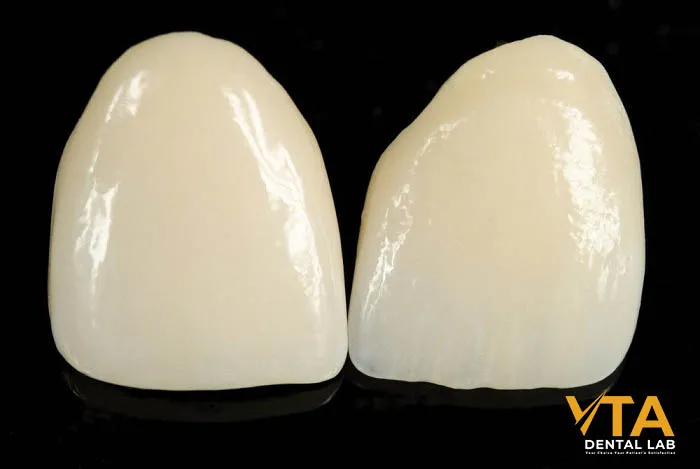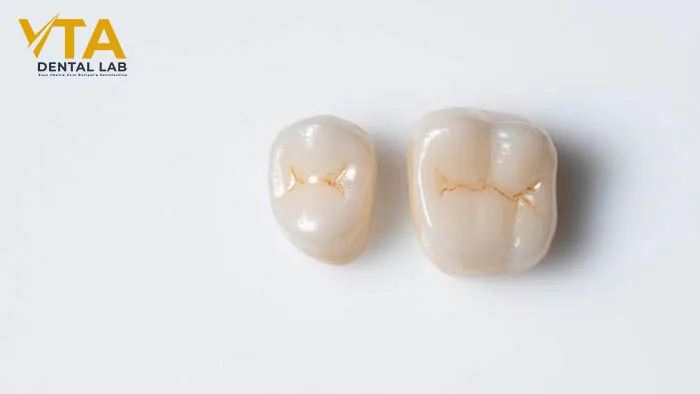Understanding the Dental Crown Procedure
In modern dentistry, the dental crown procedure not only aims to restore function but also ensures long-term aesthetics and durability. Smoothly prepared margins help reduce the pressure on the crown, thereby lowering the risk of fractures. For ceramic restorations, a precise fit is crucial and requires absolute accuracy at every step of the process. Uniform and adequate tooth reduction enhances the strength of the ceramic material while providing a natural and harmonious result with the surrounding teeth. When performed correctly, a dental crown is not only strong and reliable but also enhances the natural beauty of the patient’s smile.
What is a Dental Crown?
A dental crown is a custom-made cap designed to cover a damaged or weakened tooth, restoring its shape, size, strength, and aesthetics. Crowns can be made from various materials, including porcelain, metal, zirconia, ceramic, and composite resin, each offering different advantages in terms of durability, appearance, and cost. Dental crowns are commonly used to protect teeth after root canal treatment, support teeth with large cavities, improve the appearance of discolored or misshapen teeth, and serve as anchors for dental bridges.

Dental Crown Procedure: The Dental Lab-Clinic Connection
As part of the dental crown procedure, you must collaborate with a dental laboratory to create high-quality restorations. Professional dental labs provide expert solutions for complex cases and craft custom restorations that match your patient’s natural teeth in terms of color, size, shape, and fit.
Initial Consultation and Examination
After taking the patient’s dental impression, the next step is to send it to the dental laboratory and discuss specific technical details, the materials to be used, and the aesthetic goals and requirements. Here, you can provide as many detailed notes as possible to ensure the lab fully understands your expectations, allowing them to create a restoration that meets your desired outcome.

Fabrication of the Permanent Crown
The permanent crown is custom-made in a dental laboratory based on the impressions taken. The fabrication process depends on the chosen material. Porcelain and ceramic crowns are designed to match the natural tooth color, while metal crowns provide superior strength. Some advanced dental clinics use CAD/CAM technology (computer-aided design and manufacturing) to create crowns in a single day, eliminating the need for a temporary crown.
Once the crown is ready, the patient returns for a fitting appointment. Khi đặt mão răng, bạn cần checks the fit, color, and bite alignment to ensure comfort and functionality. If necessary, minor adjustments are made to achieve a perfect fit.
Cementing the Permanent Crown
The final step of the dental crown procedure is bonding the permanent crown to the prepared tooth. The temporary crown is removed, and the tooth is cleaned thoroughly before applying a special dental adhesive to secure the permanent crown in place.
A curing light is used to harden the adhesive quickly. The dentist then checks the patient’s bite and makes final adjustments if needed. Any excess adhesive is removed, and the patient receives care instructions to maintain the longevity of the crown.

How to Care for a Dental Crown
After completing the dental crown placement, it is essential to schedule a follow-up appointment with the patient to assess the health of the restored tooth and make any necessary adjustments. With proper care and maintenance, dental crowns can last between 10 to 15 years. Additionally, by following a well-structured procedure and maintaining effective communication with the dental laboratory, you can ensure high-quality restorations that meet expectations, function optimally, look natural, and provide a positive experience for your patients.
Potential Risks and Complications
Although dental crowns are an effective restorative solution, some risks có thể xảy ra trong một số trường hợp và bạn nên tư vấn kỹ càng cho bệnh nhân của mình. Cụ thể:
- Temporary sensitivity: Nerve irritation can cause temporary sensitivity, but this usually resolves within a few days.
- Loose or dislodged crown: Weak adhesive or excessive chewing force can cause the crown to loosen or fall out. In such cases, the dentist can re-cement or replace the crown.
- Allergic reactions: Rarely, patients may have an allergic reaction to metal crowns. Those with metal allergies should consider porcelain or zirconia crowns.
- Gum inflammation: Poor oral hygiene or an ill-fitting crown can cause gum irritation, which can be managed with proper dental care and adjustments if necessary.
Conclusion
Knowing how to properly perform the dental crown procedure is crucial to ensuring successful treatment. Dentists must also choose a reputable dental laboratory that uses high-quality materials and skilled technicians to create crowns that meet their desired specifications.
At VTA Dental Lab, we craft highly precise and consistently high-quality crowns and bridges to help dentists provide an exceptional patient experience. To learn more about our services and see if they align with your clinic’s needs, feel free to contact us directly or submit your case through our online lab portal.